Arthritis is very common. Arthritis is wear and tear upon a joint manifested as pain and stiffness. The most common reasons for joints to wear out is trauma and genetics. Some people will fracture into a joint, and this joint is likely to develop post-traumatic arthritis at some point. With genes however, some people will never get arthritis well into their 90’s, and others their joints will wear out in their 30’s, or even younger.
Osteoarthritis
This is very common and affects all joints, with the small joints of the hand being very prevalent. Therapy and anti-inflammatories are the best initial treatments, with splinting appropriate for certain joints, namely the base of the thumb. However if and when these methods fail, function and pain relief are the primary goals. Depending on the joint, excision, replacement or fusion may be the best options. The exact procedure is tailored to each individuals needs as some treatments maintain range of motion at the expense of power. Others maintain power at the expense of range of motion.
Base of thumb arthritis
This is one of the most common arthritic conditions in the body. It can occur in most age groups but most commonly affects middle-aged women. It starts with pain at the base of the thumb, either palm side or back side, and a loss of the normal contour of the thumb. There are often problems opening jars or turning door handles or strong gripping motions.
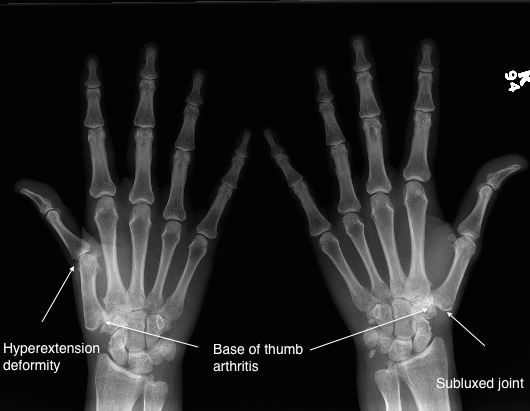
Base of Thumb Arthritis: http://orthoinfo.aaos.org/topic.cfm?topic=A00210
Finger Arthritis
Any of the joints in the fingers can become arthritic, often multiple digits. The treatments depend on exactly which joint and what each individual wants. Replacement is a good option for some joints whereas fusion is better for others.
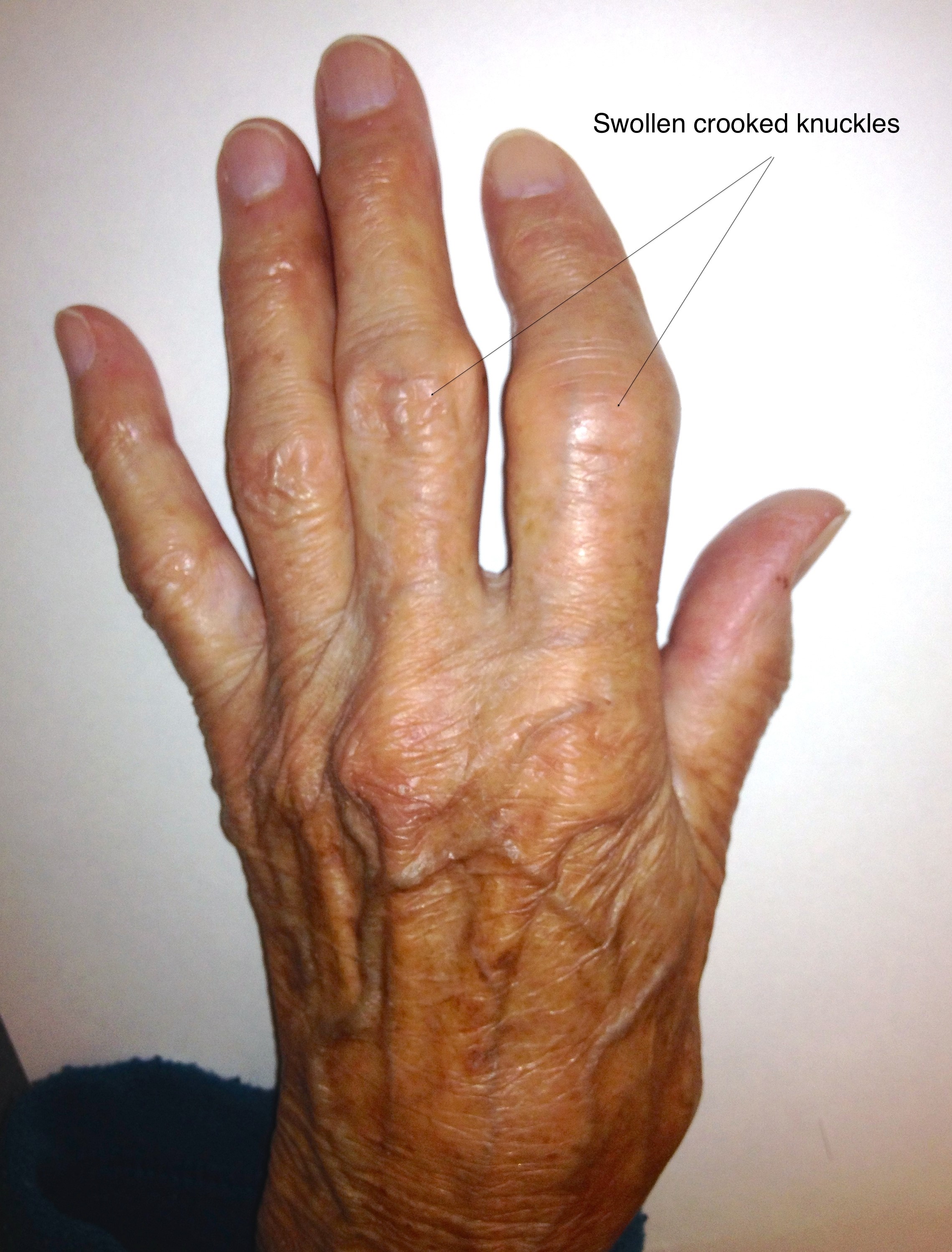
Arthritis of the Hand: http://orthoinfo.aaos.org/topic.cfm?topic=A00224
Scapholunate Advanced Collapse (SLAC)
This pattern of arthritis is the natural history of a torn scapholunate ligament in the wrist. Often the initial injury was rather benign but the wrist was never quite right afterwards. The patient is diagnosed as a wrist sprain and never gets the appropriate treatment. This process takes a decade or more to develop. It develops because the kinematics of the wrist are abnormal and the bones move independently causing abnormal stresses on the bones leading to arthritic degeneration. Occasionally it may be symptom free until the arthritis develops. Treating this acutely is the best way to prevent this arthritic process from developing. Treatment of this early is surgical reconstruction either anatomically or non-anatomically. As the arthritis progesses an excision, a Proximal Row Carpectomy (PRC), or a partial fusion 4 corner fusion may become appropriate.
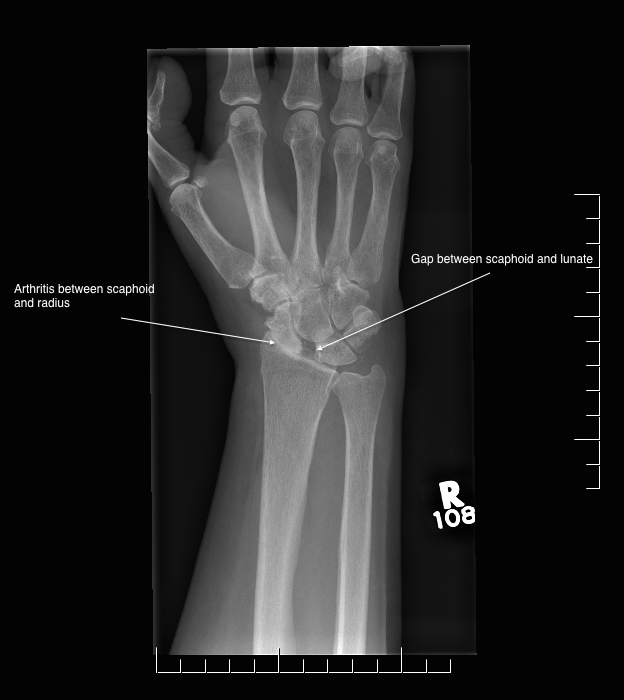
SLAC wrist – this has a predictable progression of arthritis from the radial styloid, to the whole radio-scaphoid joint, and lastly capitolunate arthritis.
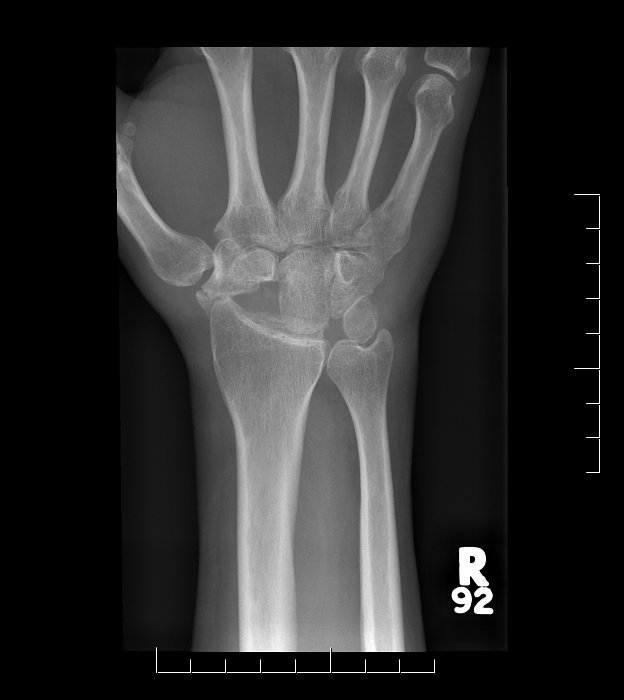
A proximal row carpectomy showing the scaphoid, lunate and triquetrum having been removed.
Scaphoid Non-Union Advanced Collapse (SNAC)
This pattern of arthritis is the natural progression as a result of a scaphoid fracture that is left untreated. This is very similar to a SLAC wrist in it cause, presentation and treatment. Also like SLAC wrist the lunate is no longer held in a flexed position so the lunate starts to tilt backwards (dorsal) leading to a DISI (dorsal intercalated segment instability), showing the altered kinematics of the wrist.
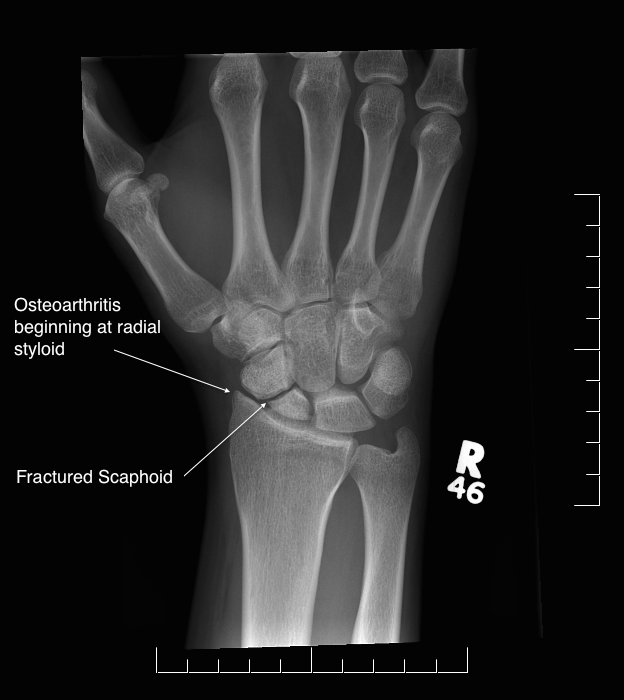

Carpal Boss
A carpal boss is an enlargement of the bone at the base of the second or third metacarpal. It is a firm swelling often mistaken for a ganglion. Treatment is splinting and / or steroid injections and anti-inflammatories. Rarely do they need operative debridement.
Rheumatoid Arthritis
The mainstay of rheumatoid arthritis is non-surgical and is supervised by a rheumatologist. However there is a point when function may start to deteriorate secondary to tendon ruptures, deformities and dislocations. Surgery is often very successful with rheumatoid patients and will gain back significant lost function. It is important to not wait too long before having surgery however for this condition. As if left too late, goals can often change from regaining function to stopping progression, because of soft tissue and boney destruction.
Surgery can achieve many different things, first it make the hand look like a hand again with normal alignment. It may involve something small like rebalancing dislocated tendons, to repairing ruptured tendons to a total wrist fusion or replacement. Since there are many joints involved in RA, the exact combination of treatments differs for each person.

Arthritis Mutlians – this shows many of the findings of late stage rheumatoid arthritis, with wrist (carpal) degeneration, dislocation of the joints and ‘pencil in cup’ degeneration.